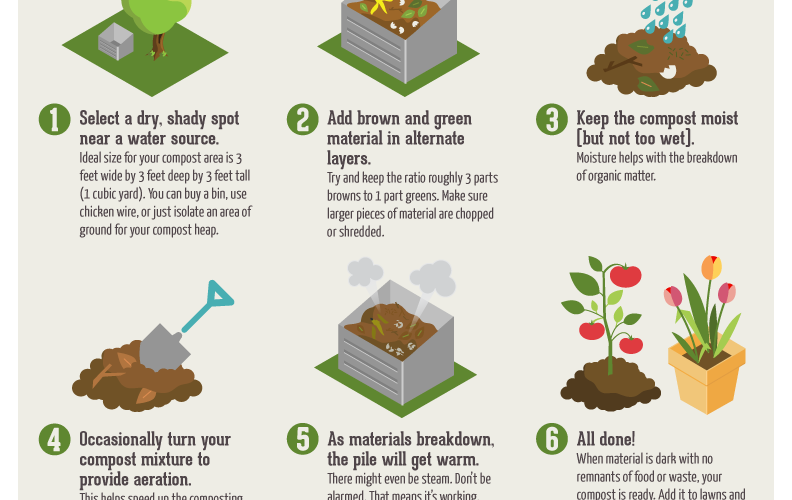Compost is decomposed organic matter from plants or animals. It is an environmentally sustainable way to dispose of some yard and kitchen waste. It also provides excellent nutrients for the garden. Using compost as a garden fertilizer will improve soil quality and help plants to grow better. Compost can also be used on the lawn to improve the health of grass or as a potting mix to start plants in containers. Composting is an easy way to better the environment while improving the look of the yard and garden at the same time.
Where to Compost
There are several options to consider when establishing a place for compost. It will need to be convenient both from the garden and from the kitchen. Most people will want it to be somewhat out of sight. A wooden bin, an area marked off by mesh wire, or an enclosed compost container can all be good options.
It is important to take into account whether an open or closed container would be a better choice. In rainy climates, a closed container keeps compost from getting too wet, but it will need to be watered regularly and opened to add and mix materials. An open container collects rainwater and makes it easy to add material. Open containers may also attract pests such as rodents or insects.
What to Compost
Green materials and brown materials are the two main building blocks of compost. Green materials are weeds, green leaves, grass clippings, kitchen scraps, and fruit. Many different kitchen scraps can be added to the compost including fruits and vegetables, coffee grounds, and used tea bags. Brown matter includes dry leaves, dried grass, straw, and shredded cornstalks. Compost piles break down the fastest when there is a good balance of one-part green materials to about four-parts brown materials.
How to Compost
Add green and brown materials to the pile and nature will do most of the work. It is best to add as much as possible at the same time so that it can all begin to break down on the same schedule. Many composters choose to have two containers at the same time so that compost can be breaking down in one while new materials are being added to the other.
Compost will need to be turned with a pitch fork weekly to encourage matter on the outside to move to the inside and vice versa. This helps the pile to break down at the same rate. A compost thermometer can show the temperature of the compost. A healthy compost pile should heat up to 160 degrees Fahrenheit in the sun. Compost should be kept damp, but not wet. Water or add additional brown material as needed to adjust the moisture content.
Compost will be dark brown and moist when it is ready to use. The individual materials will no longer be decipherable and it will all look approximately the same. The entire process varies, but most people find that compost is ready to use in about two months.
<>
<>
<>



